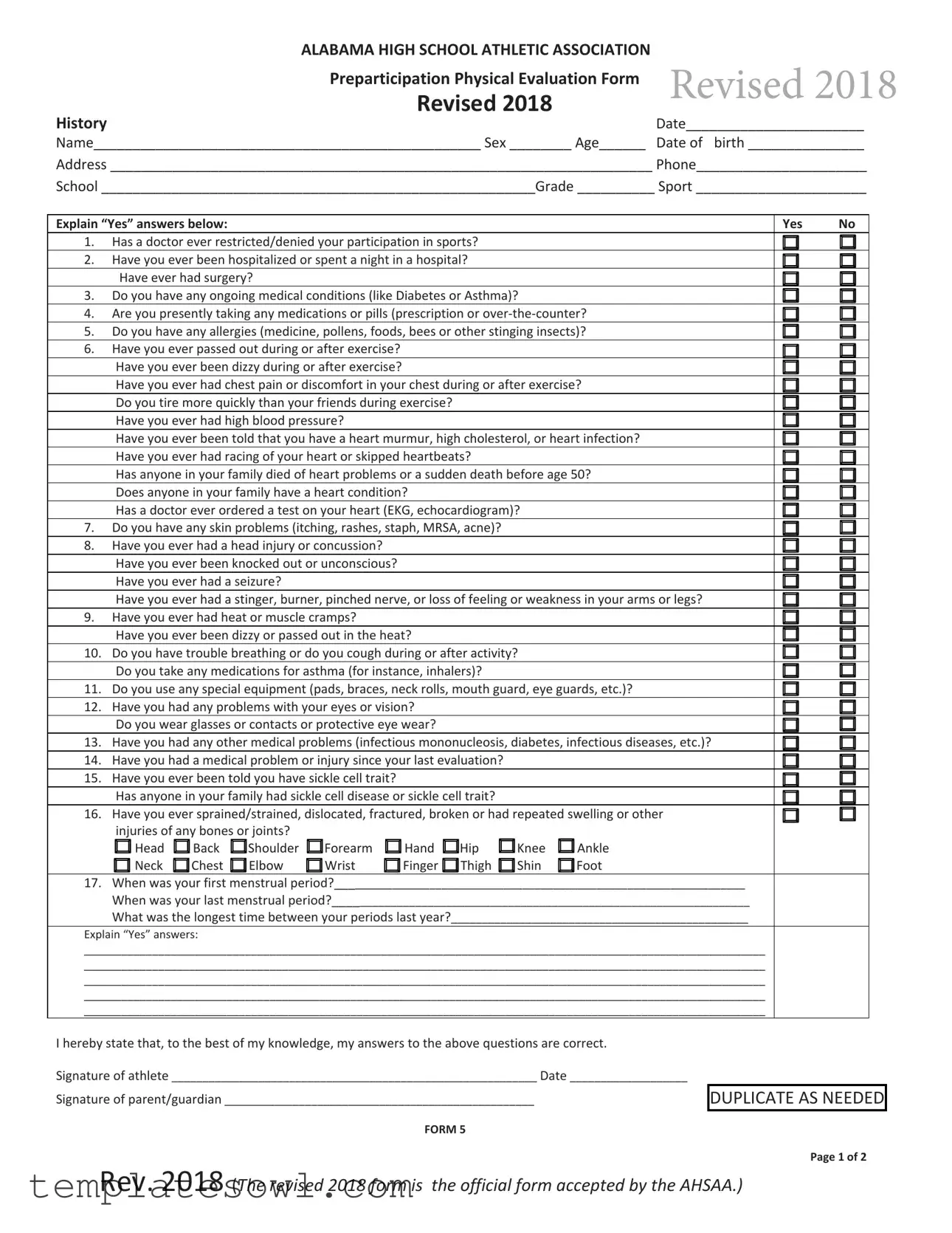What is the purpose of the Alabama High School Physical form?
The Alabama High School Physical form is used to evaluate a student-athlete's health and readiness for participation in sports. It ensures that athletes do not have any medical conditions that could pose a risk during physical activity. By obtaining a signed physician’s statement, schools can confirm that a student has undergone a thorough examination and is fit to compete.
Who needs to complete the physical form?
All student-athletes in grades 7-12 who wish to participate in interscholastic athletics must complete the physical form. This requirement applies to both new participants and those who have previously participated in sports. The physical must be completed annually to ensure ongoing health and safety.
How often must the physical examination be conducted?
A physical examination must be conducted at least once each year. The evaluation is valid for one calendar year from the date of the examination. Athletes require a new form if a full year has passed since their last exam or if there have been significant changes in health status.
What information is collected in the physical form?
The physical form collects personal information such as the athlete's name, age, address, school, and grade. It also includes a detailed medical history section where the athlete must disclose any past injuries, surgeries, or ongoing health issues. The examining physician will assess various health indicators and complete a physical examination section of the form.
What happens if a student is not cleared for participation?
If a student is deemed not cleared for participation, the physician will specify the reasons. This may include restrictions based on the type of sport (e.g., contact vs. non-contact) or the intensity of participation. The student may need to undergo further evaluation, rehabilitation, or treatment before being eligible to participate in athletics.
Can parents or guardians complete the form on behalf of their child?
Parents or guardians may assist their child in completing the form, particularly with the medical history sections. However, a licensed physician (M.D. or D.O.) must conduct the physical examination and provide their signature on the form for it to be valid.
Where should the completed physical form be submitted?
The completed physical form should be submitted to the Superintendent's or Principal's office at the student's school. It is important that the form is on file prior to the student participating in any athletic activities. Schools may have their own deadlines for submission, so it is advisable to check in advance.


